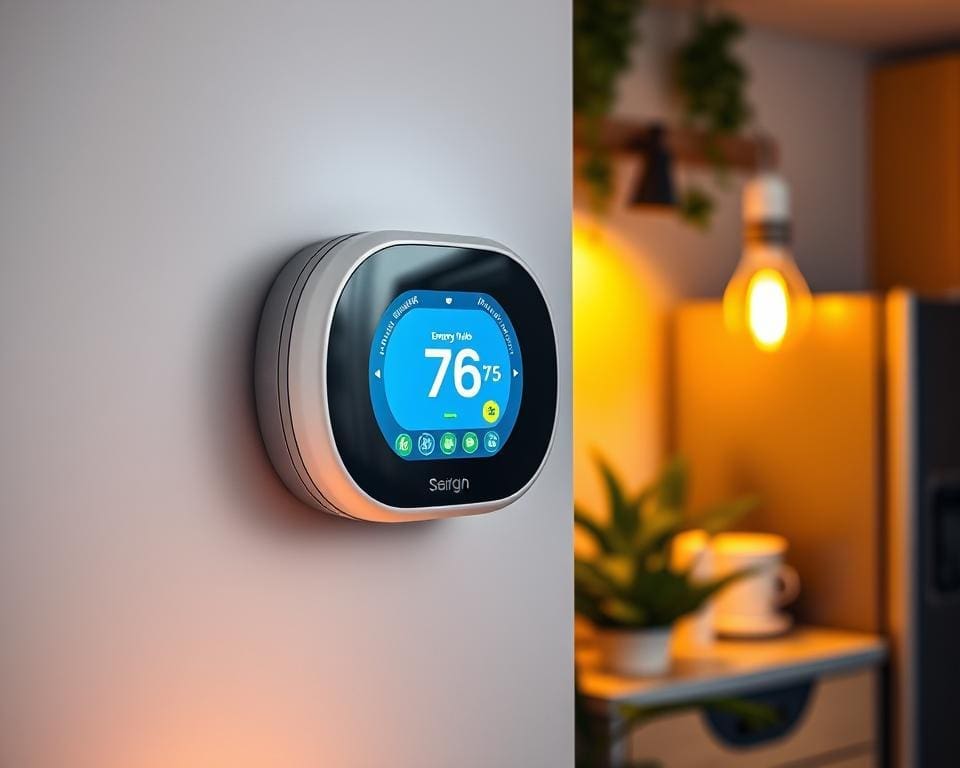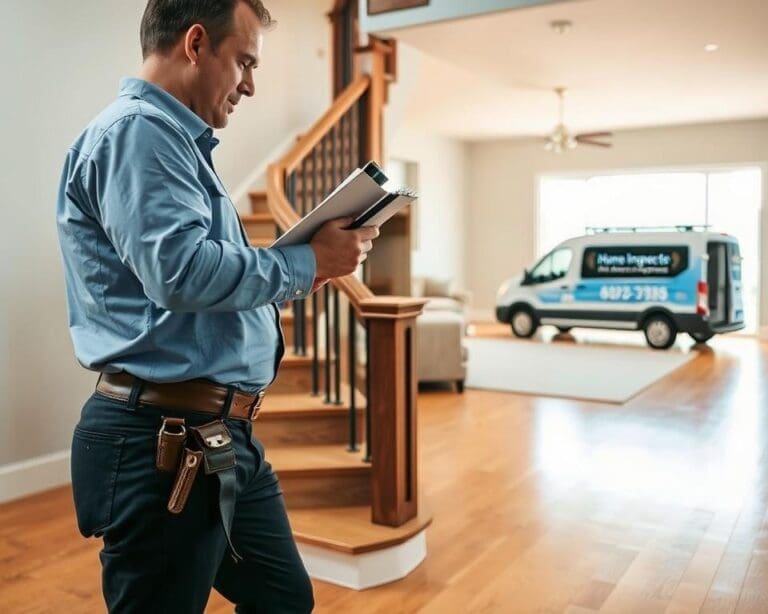As the demand for energy-efficient home technology grows across the United Kingdom, smart thermostats with learning features emerge as a transformative solution. These devices harness advanced algorithms to learn the preferences and routines of homeowners, thereby enhancing energy efficiency in every household. By optimising heating schedules, such smart heating control systems minimise energy waste, leading to substantial cost savings and a positive impact on the environment.
With leading models such as the Nest Learning Thermostat and the Ecobee SmartThermostat setting new benchmarks, the implementation of these intelligent systems paves the way for a more sustainable future. The journey towards energy savings simplified has never been more straightforward, as homeowners are empowered to take control of their energy consumption and contribute to the UK’s ambitious carbon reduction goals.
Understanding Smart Thermostats
In the modern age of technology, understanding smart thermostats becomes essential for energy-conscious homeowners. Unlike traditional thermostats, these innovative devices empower users to control their heating and cooling systems remotely. The convenience of adjusting settings from a smartphone or tablet is a significant benefit.
What are Smart Thermostats?
Smart thermostats are internet-connected devices designed to optimise energy usage in homes. They not only allow for remote access but also gather data about user habits, enabling automated adjustments. This feature distinguishes them greatly from conventional thermostats, which require manual operation and provide less flexibility. Understanding smart thermostats means recognising their pivotal role in enhancing comfort while saving on energy costs.
Key Features of Smart Thermostats
The features of smart thermostats include:
- Wi-Fi connectivity for remote management
- Customisable schedules to fit individual lifestyles
- Integration with various home automation systems
- User-friendly interfaces that simplify operation
- Geo-fencing capabilities, adjusting settings based on location
These features contribute significantly to energy efficiency, as highlighted by resources like the Energy Saving Trust. When selecting a smart thermostat, it is vital to consider how these features align with your home’s specific needs and energy goals. For a more comprehensive understanding of efficient heating options, explore this guide.

Smart Thermostats with Learning Features: Energy Savings Simplified
Smart thermostats with learning features revolutionise the way we manage our home energy consumption. These innovative devices utilise advanced technology to understand user behaviour and adapt to individual heating needs. This personalisation not only ensures comfort but also drives significant energy savings.
How Do Learning Features Work?
The core functionality of learning features lies in their ability to analyse patterns in temperature preferences and occupancy. By recognising when a home is typically occupied or unoccupied, these thermostats can automatically adjust heating schedules, resulting in optimized energy utilisation. Users witness a noticeable decrease in energy bills while enjoying a consistently comfortable environment.
Environmental Benefits of Using Smart Thermostats
Beyond personal financial savings, smart thermostats with learning features contribute positively to the environment. As these devices enhance energy efficiency, they help reduce carbon emissions associated with heating. Implementing such technology can play a vital role in the wider effort to combat climate change. Homeowners engaging with these smart solutions not only enhance their living experience but also take a step towards sustainable living.
The Rise of Energy-Efficient Home Technology
The interest in energy-efficient home technology continues to surge as homeowners seek innovative solutions to reduce their carbon footprint. Smart thermostats, a central component of home automation trends, play a pivotal role in optimising energy consumption. These devices offer not only convenience but also significant cost savings while contributing to a sustainable lifestyle.
Current Trends in Home Automation
Home automation has evolved remarkably, with a focus on systems that enhance energy efficiency. Key trends include:
- The integration of smart devices allowing for seamless control of heating, lighting, and security.
- Increased use of smart home ecosystems, exemplified by platforms like Amazon Alexa and Google Nest, which connect various devices for smarter energy management.
- A growing emphasis on user-friendly interfaces that enable easy monitoring and adjustments via smartphones or tablets.
Such innovations guarantee that energy-efficient home technology is not only practical but also accessible for every household.
Comparing Traditional vs Smart Thermostats
When analysing traditional vs smart thermostats, significant differences emerge. Traditional systems require constant manual adjustments, leading to inefficiencies and increased energy bills. In contrast, smart thermostats leverage data analytics to learn user behaviours and preferences, making automatic adjustments to maintain optimal comfort while minimising energy use. This capability results in a smarter way to manage heating efficiently.
Homeowners are discovering that investing in smart thermostats can transform their living spaces into hubs of efficiency. The adjustment to energy-efficient home technology paves the way for a sustainable future shaped by innovation and design. For more insights on contemporary design trends that align with these advancements, explore exciting interior design trends that embrace eco-friendly solutions.
Benefits of Programmable Thermostats
Programmable thermostats offer a plethora of advantages that significantly enhance home life. One of the standout features is their ability to provide unparalleled comfort control. With tailored heating schedules aligned to user routines, homes can achieve an ideal temperature without wastage. This means walk into a warm living room during winter evenings or a cool refuge in summer, all thanks to the efficient programming.
Enhanced Comfort and Control
Gone are the days of manually adjusting heating. Programmable thermostats empower users to dictate their home’s climate effortlessly. These devices learn preferences over time, adapting to variables such as the season or daily activities. As homes evolve into personalised havens, the benefits of programmable thermostats become clear. An expertly curated indoor climate turns everyday living into a more comfortable experience.
Cost Savings Over Time
The financial impact of programmable thermostats is nothing short of remarkable. With the potential for significant cost savings, users often see reductions in their energy bills. Energy use patterns can be optimised by analysing data collected from smart devices. This leads to more informed usage and conservation efforts. Homeowners may realise savings of up to £100 annually by switching to programmable options. Such financial benefits make these devices an appealing investment for the modern home.
By integrating energy-saving features, these smart solutions prove that comfort and cost-effectiveness can go hand in hand. For those interested in enhancing outdoor aesthetics, exploring stylish garden pergolas can complement the comfort offered indoors as well.
Smart Heating Control Systems: A Comprehensive Overview
Smart heating control systems represent a significant leap in home heating technology, combining advanced heating technology with user-friendly interfaces. These systems allow homeowners to integrate smart thermostats with complementary devices such as smart plugs and sensors, creating an interconnected and efficient heating environment. The overview of smart heating reveals how these components work in harmony to optimise energy usage and enhance comfort throughout the home.
One of the standout features of smart heating control systems is their ability to facilitate remote control and monitoring via internet-connected devices. Homeowners can adjust settings, track energy consumption, and receive notifications from virtually anywhere, ensuring that heating is not only flexible but also tailored to their specific needs. As cited by Smart Energy GB, leveraging these technologies can significantly improve heating efficiency, reducing waste while promoting a sustainable lifestyle.
Moreover, the growing popularity of smart heating control systems reflects a broader trend towards energy-efficient home solutions. As consumers increasingly seek to minimise their carbon footprints and reduce energy bills, these advanced heating technologies offer an ideal answer, blending comfort with conscientiousness. By embracing smart heating control systems, households can look forward to not just a warmer home but also a more sustainable future.









